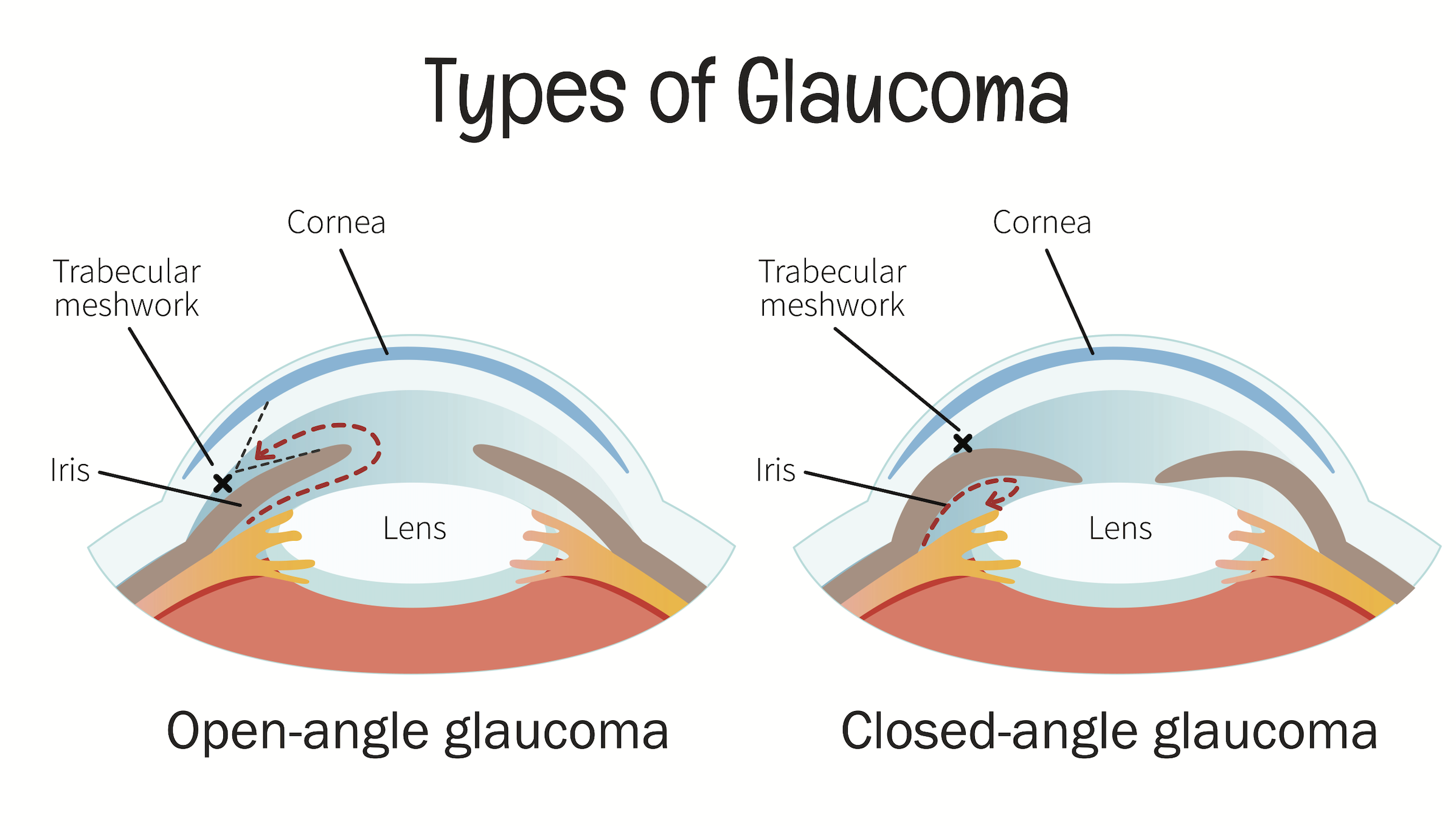What is Glaucoma?
Glaucoma is a group of eye conditions that cause progressive damage to the optic nerve—the vital connection between the eye and the brain responsible for vision. Often called the “silent thief of sight,” glaucoma can develop slowly and painlessly, without noticeable symptoms until permanent vision loss has already occurred. Because the damage is irreversible, early detection through regular eye exams is the key to preserving vision.
Glaucoma is one of the leading causes of blindness worldwide, responsible for over 10% of total blindness in the United States and affecting more than 70 million people globally, with nearly half unaware they have the condition. Fortunately, when detected early, glaucoma can often be controlled to prevent further vision loss.
Symptoms of Glaucoma
Because glaucoma can appear in different forms, symptoms vary depending on the type and severity of the condition.
Open-Angle Glaucoma — the most common form — progresses slowly and painlessly. In its early stages, there are usually no noticeable symptoms, which is why many people remain undiagnosed until significant damage has occurred. Over time, patients may notice gradual loss of peripheral (side) vision, followed by narrowing of their overall visual field as the disease advances.
Angle-Closure Glaucoma, on the other hand, can present suddenly and is considered a true eye emergency. Symptoms may include severe eye pain, blurred or decreased vision, halos around lights, eye redness, headache, and sometimes nausea or vomiting. Immediate treatment is critical in these cases to prevent permanent vision loss.
Routine eye exams that measure intraocular pressure, evaluate the optic nerve, and assess the drainage angle of the eye are vital for detecting both forms early — often before vision is affected.
Treatment of Glaucoma
We offer full spectrum of modern glaucoma management, using evidence-based and personalized approaches for each patient. Treatments range from medicated eye drops that lower eye pressure to in-office laser procedures such as Selective Laser Trabeculoplasty (SLT) and Laser Peripheral Iridotomy (LPI). For patients requiring more advanced intervention, Dr. Tadrosse performs Minimally Invasive Glaucoma Surgery (MIGS) — including trabecular meshwork stenting, canaloplasty, goniotomy, and trabeculotomy — to enhance fluid outflow (thus reducing eye pressure) and help protect the optic nerve.
This page is for informational purposes only and does not provide medical advice.
Contact us!
Dr. Tadrosse is deeply committed to the early detection, ongoing management, and advanced treatment of all forms of glaucoma and ocular hypertension — which require consistent monitoring to protect against permanent vision loss. He takes great care in tailoring each patient’s treatment based on disease stage, eye anatomy, and individual needs, using the most current medical, laser, and surgical options available. At Nile Eye Care & Surgery, we take pride in combining precision, cutting-edge technology, and compassionate care to help patients preserve their vision and quality of life. We encourage you to schedule a comprehensive glaucoma evaluation — early detection and regular follow-up are the most powerful tools for maintaining lifelong sight.


